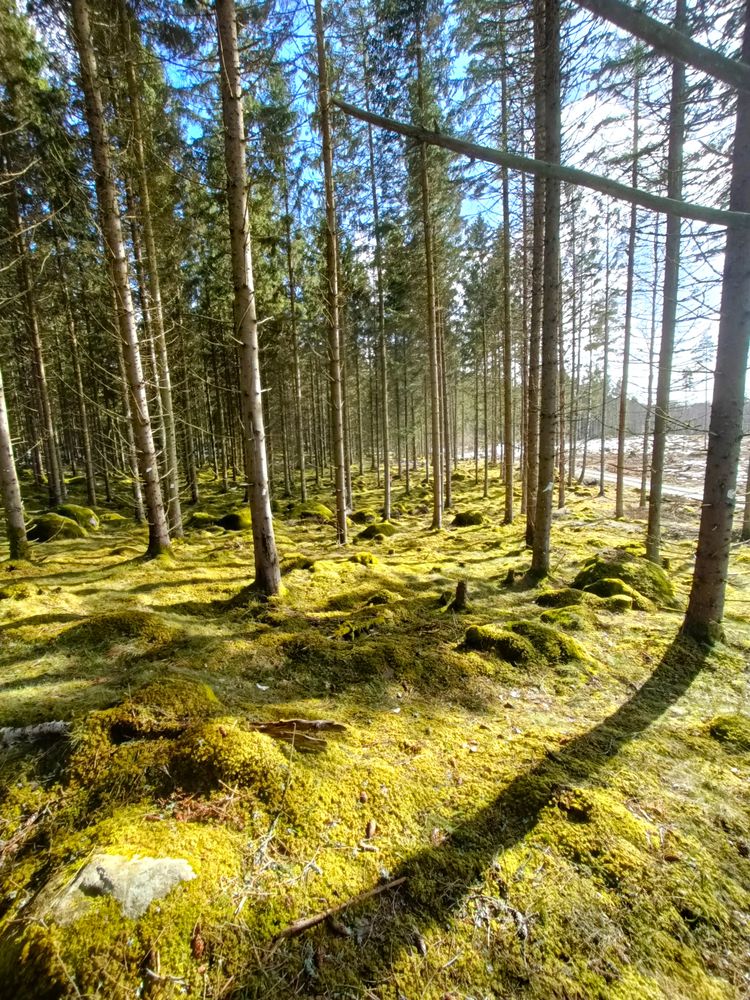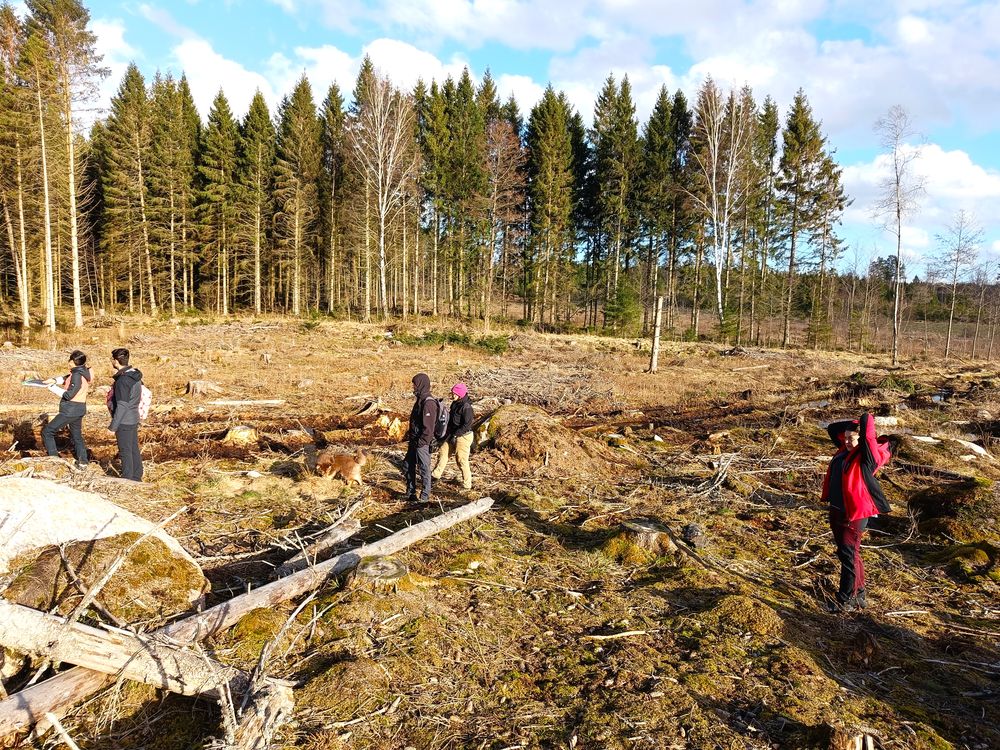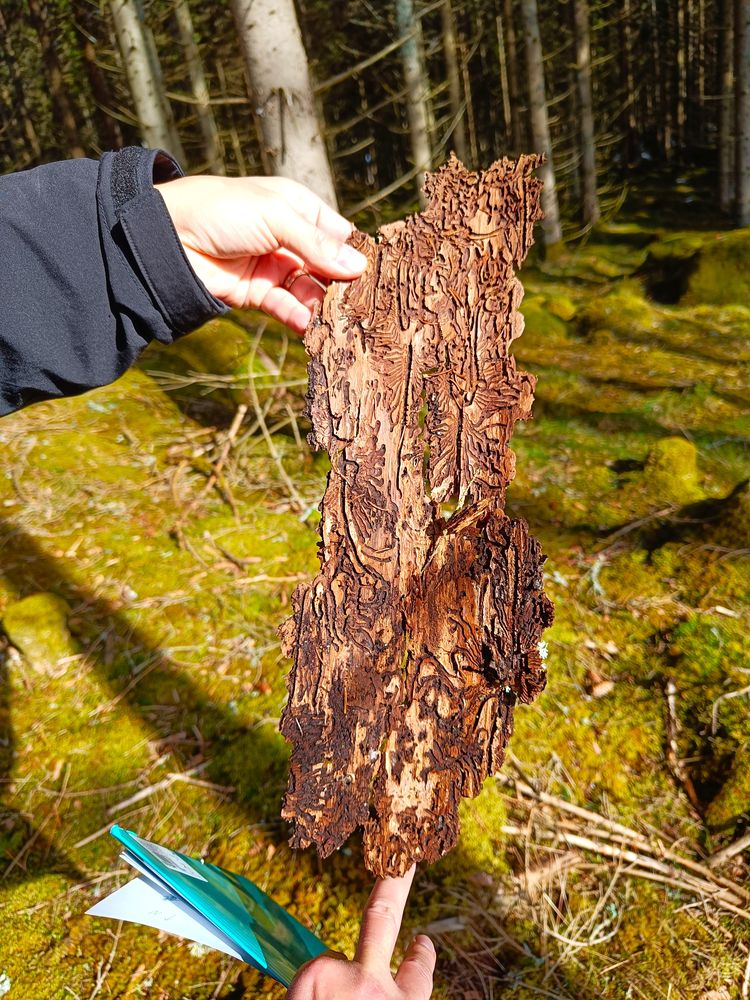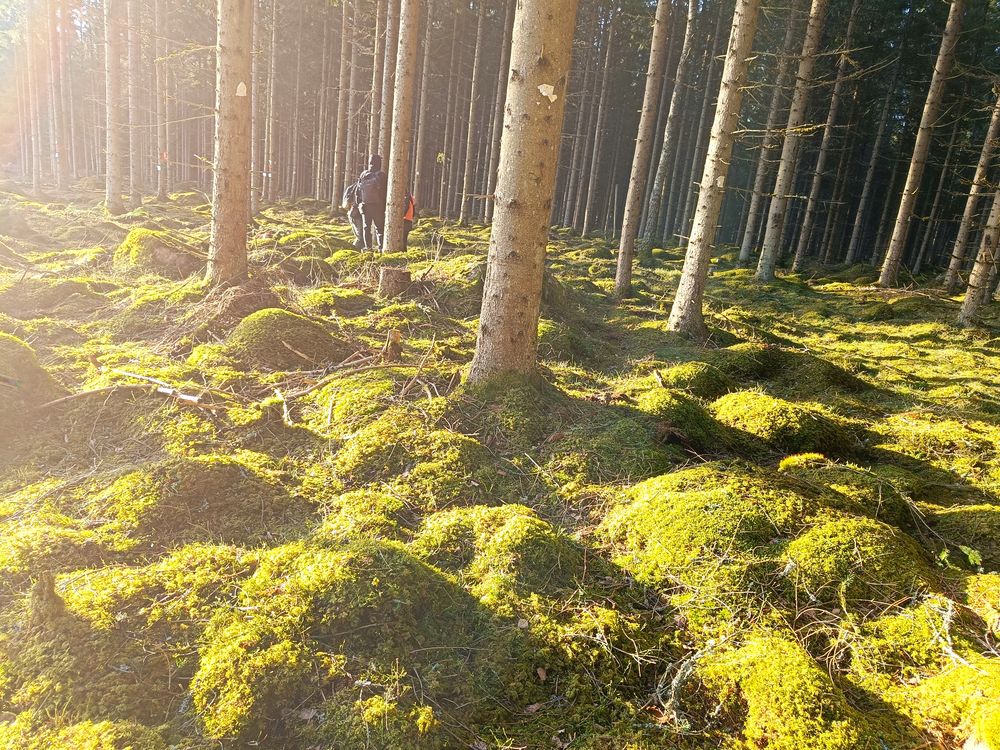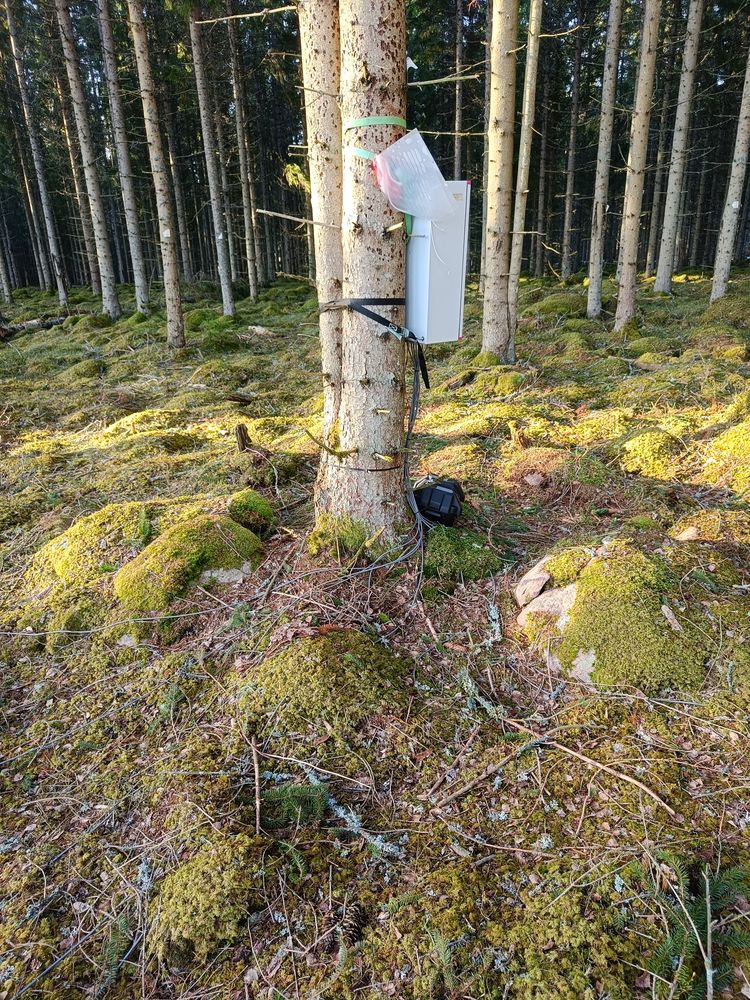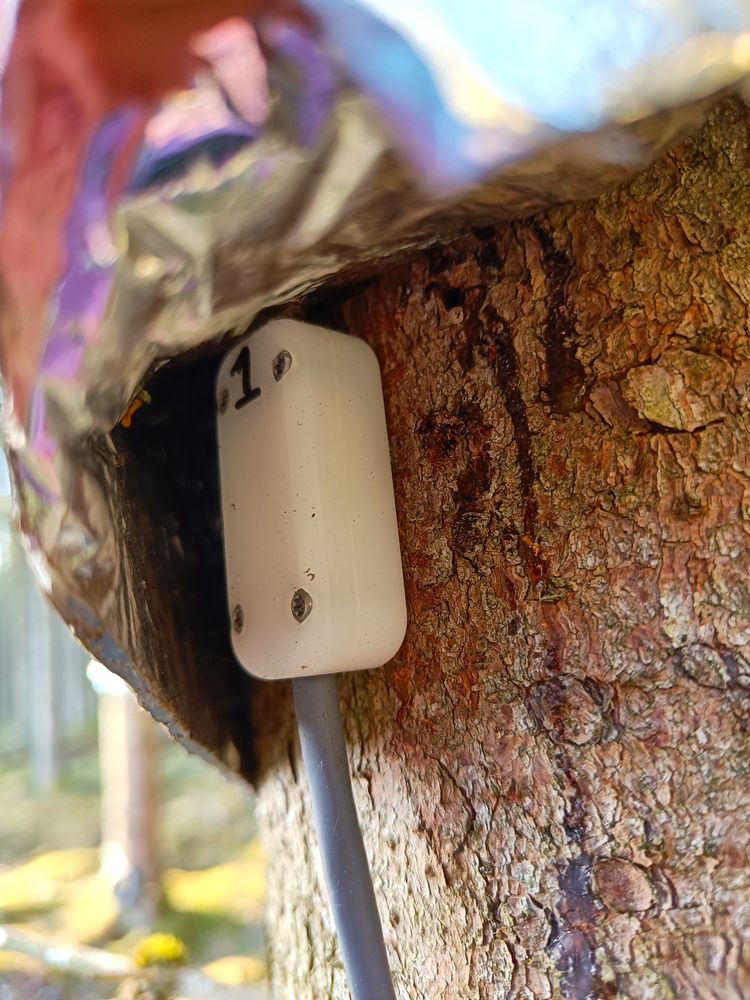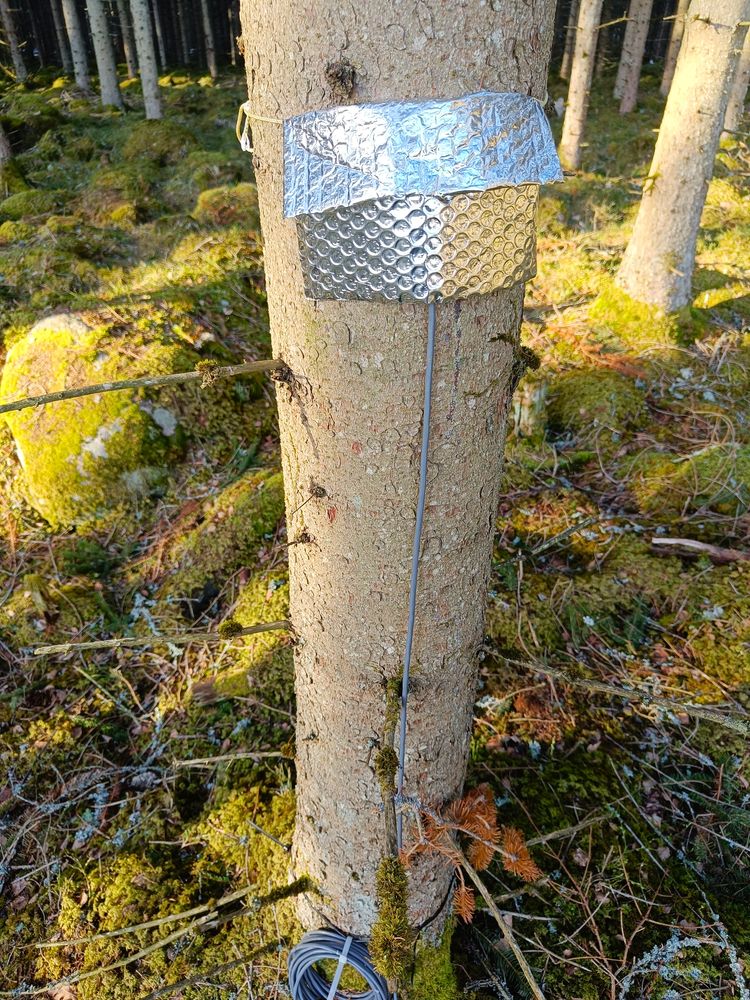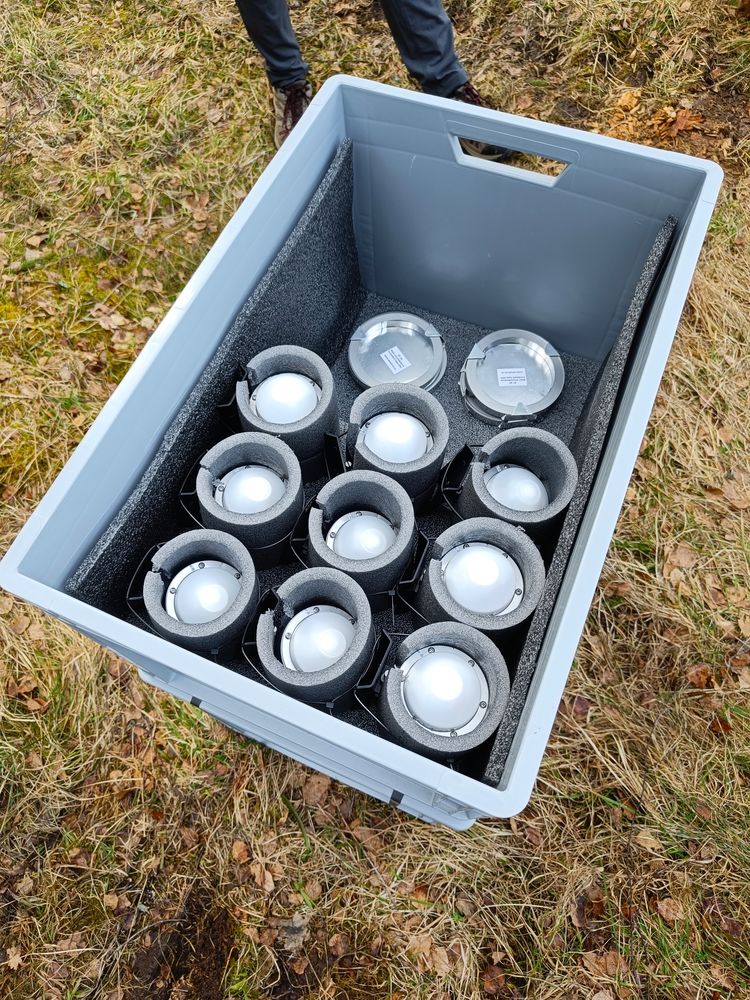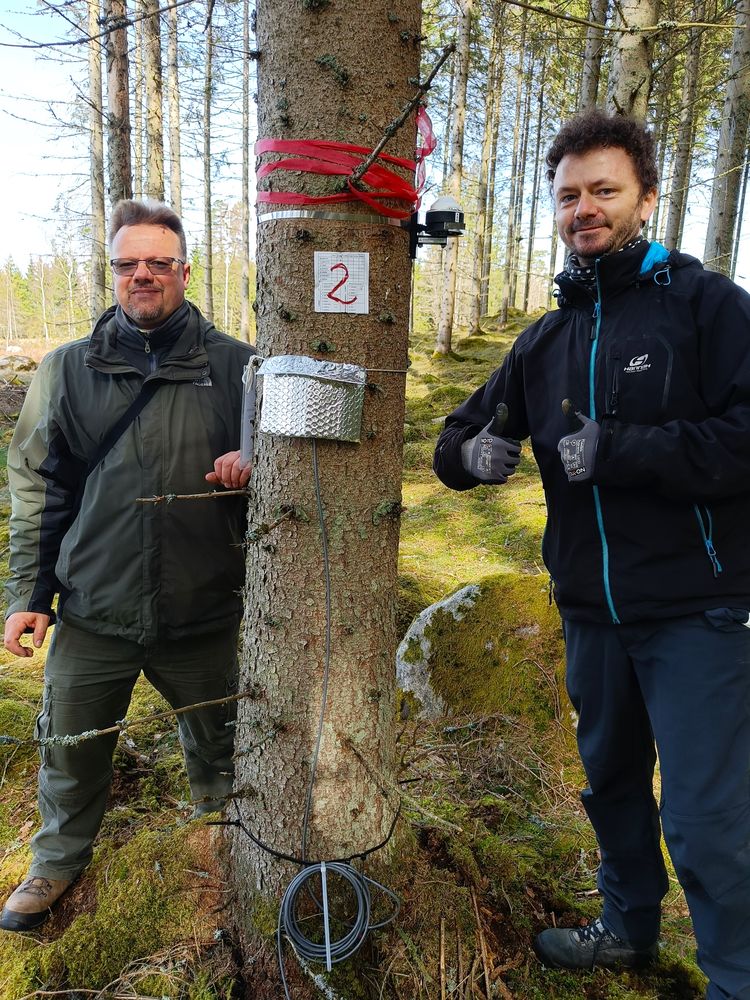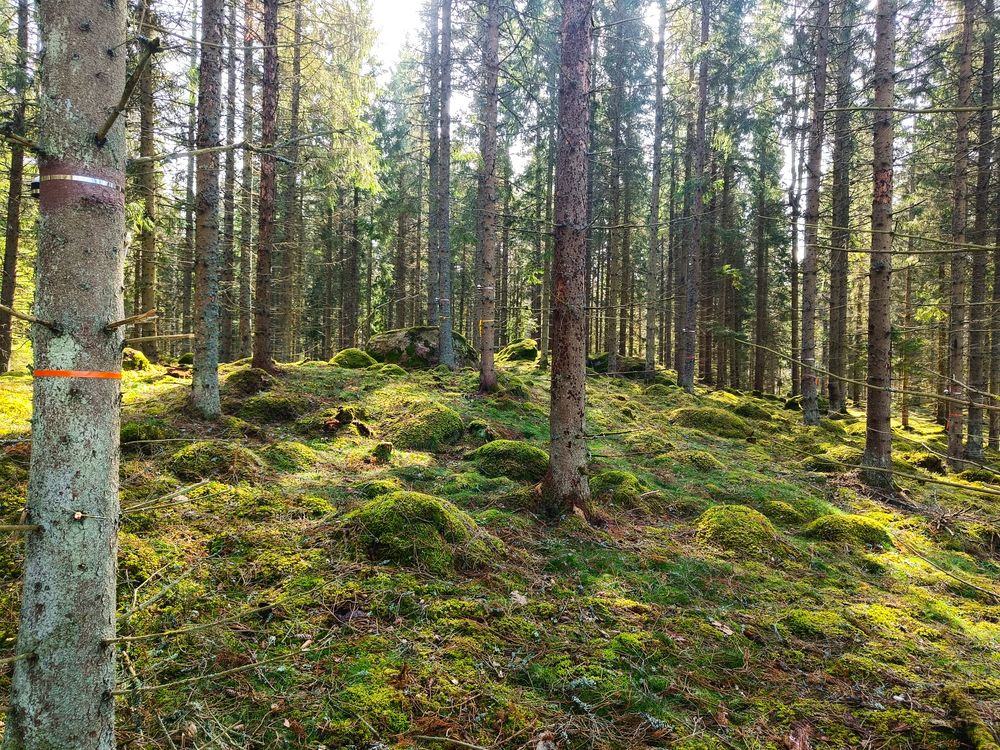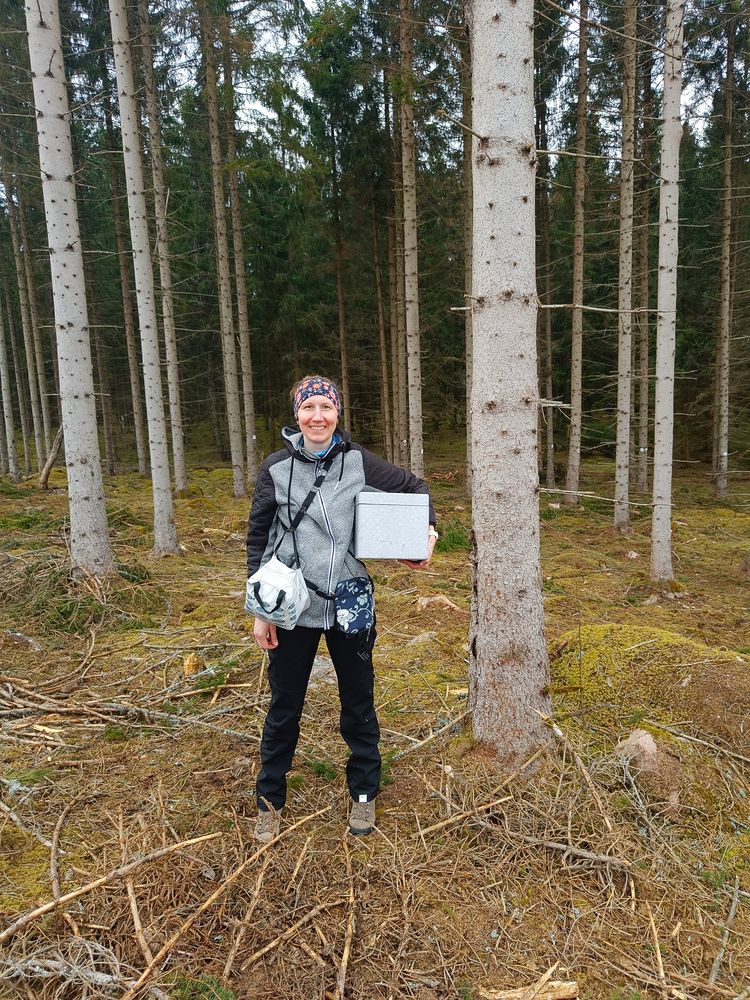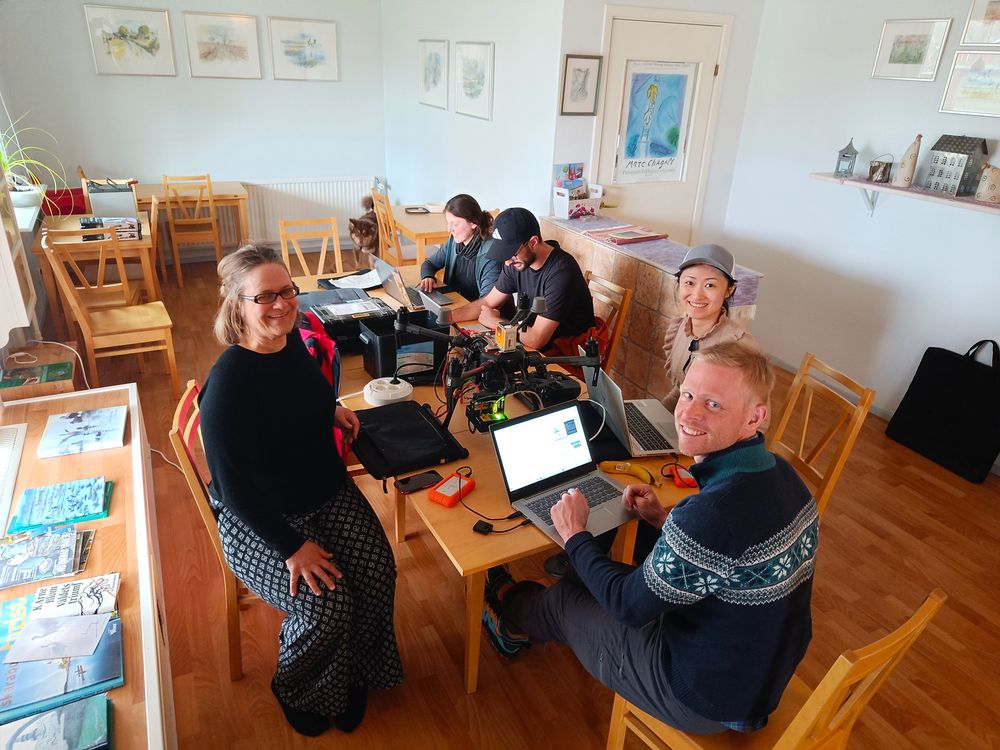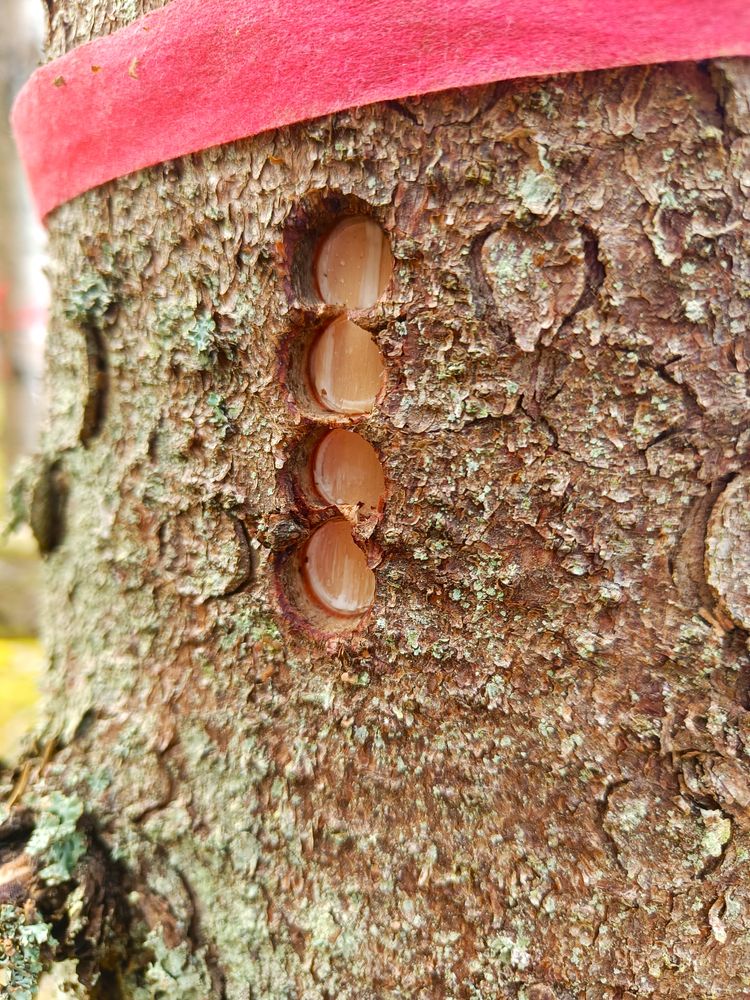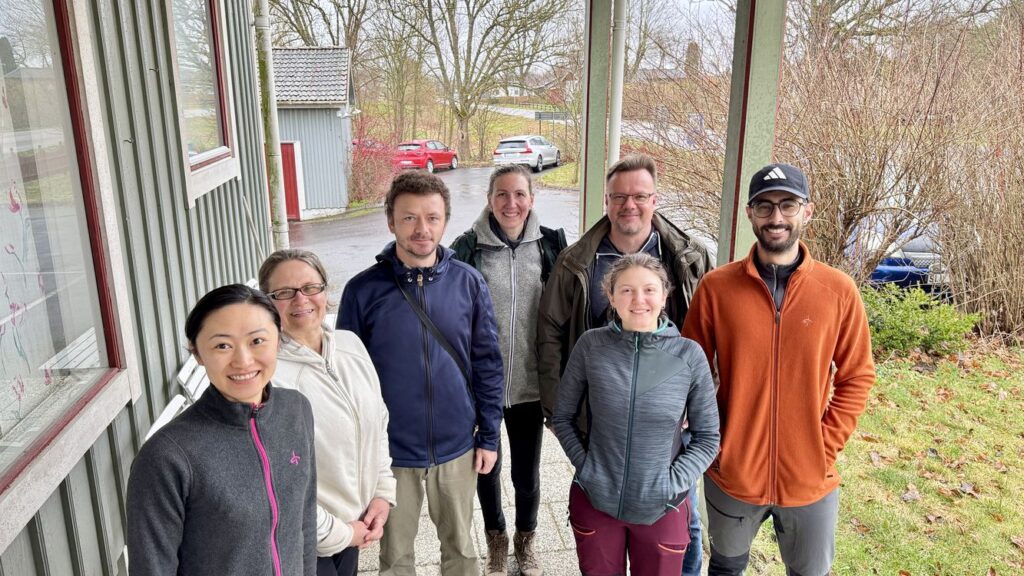April 2024 – Southern Sweden
In a collaborative effort to understand Norway spruce susceptibility to the bark beetle Ips typographus outbreak, the Slovak and Swedish partners of the Resdinet project embarked on a week-long field campaign in the heart of Sweden in mid-April 2024. The Swedish partners from SLU provided valuable administrative and organizational support. The joint team delved into the affected areas in Remningstorp, southern Sweden, where the ongoing infestation severely affected spruce stands in the previous years.
The primary focus of the field campaign was to study the factors behind spruce susceptibility to bark beetle attacks and their implications for the health and survival of Norway spruce trees. Over the course of the week, the team meticulously sampled 72 mature living trees across two distinct plots, employing a range of scientific techniques and tools to investigate tree susceptibility to infestation and gather vital data for analyses.
In the course of fieldwork, the team observed that none of the trees infested in the previous years could survive bark beetle mass attacks. The two study plots offered valuable data to investigate the effects of tree morphology and physiological condition on their susceptibility to potential future bark beetle attacks. In the first plot, the team identified and sampled three distinct groups: 1) trees within the interior of the stand, with installed equipment to record sap flow fluctuations; 2) trees with shortened crowns, and 3) those with elongated crowns. Meanwhile, the second plot was characterized by a fresh stand edge created by recent clear-cutting and a significant amount of forest litter left on the ground. The first group of trees comprised five sun-exposed individuals in the 2nd and 3rd rows, equipped with sap flow sensors. The other two groups of trees incorporated individuals with both shortened and elongated crowns located (a) at the forest edge (forest edge trees) and (b) in the forest interior.
Amidst the sampling efforts, the team prioritized collecting phloem samples, crucial for subsequent genetic and chemical analyses. Using samples of varying diameters, ranging from 4×13 mm for GC-MS monoterpene analysis and simple carbohydrate analysis to 4×6 mm for genetics, the team aimed to unravel the genetic underpinnings and chemical signatures associated with the bark beetle infestation.
The fieldwork involved the installation of dendrometers, additional sap flow sensors, and drone flights over the study area, augmenting the data collection process and providing a comprehensive understanding of the ecosystem dynamics in the wake of the outbreak. The drone flights will be conducted eight times until the end of September. Bark beetle attacks and tree statuses will be monitored throughout the entire growing season of 2024.
The research findings promise to shed light on the intricate interplay between bark beetles and Norway spruce trees, informing future strategies for mitigating the impact of such outbreaks and safeguarding forest ecosystems against similar threats.
We heartily thank the Swedish partners for their help and support in organising and conducting this field campaign!
Stay updated on our latest activities by following us on our social media channels!
Instagram: www.instagram.com/resdinet
Facebook: www.facebook.com/resdinet
Youtube: https://www.youtube.com/@resdinet

